Since posting my smashed avocado, kelp noodle, and lemon bowl last week, I’ve had a number of questions about kelp noodles. What the heck are they? Where do you find them? What do they taste like? Are they similar to regular noodles? So I figured it was time for a little primer. Hopefully it’ll help you all to get acquainted with this fun ingredient!
So, what are kelp noodles? They are clear, thin noodles made from kelp, a kind of brown seaweed that is notable for its high iodine content. They are not “noodles” at all, and they don’t taste or feel anything like brown rice, quinoa, or wheat pasta. But they do have the same look of pasta, and you can use a lot of the same preparation methods with them that you might otherwise use in noodle dishes. They taste great with pesto, cashew alfredo, raw marinara, or any other wide variety of sauces. And the ingredient list is simple: kelp, sodium alginate (a form of salt), and water.
Question number two: Are they really raw? I don’t honestly know. I’ve heard plenty of rumors that kelp noodles are actually heated in the preparation process. While this is certainly no deterrent to me—as all of you know, I’m no purist about the raw vs. cooked dichotomy (more thoughts here), so I’m happy to enjoy these noodles simply because they are mineral rich, fun to work with, great to serve to friends who have food sensitivities, and versatile. If you are a strict raw foodist, do some research and make an informed choice.
The most common thing I’m asked whenever I post a kelp noodle recipe is where can I purchase kelp noodles? My favorite brand is the Sea Tangle brand, and you can purchase six packs (a couple servings each) on the company’s website. Sea Tangle noodles are also available at iHerb or at Vitacost, which, as you know, is one of my favorite resources for discounted specialty foods. Vitacost happens to be having a 12% off of everything sale today, so it’s a good time to snag a 3 pack of kelp noodles! Finally, Amazon is now selling 6 packs of kelp noodles by the Gold Mine brand, which I have yet to taste, but Kristen is a fan!
If you want to purchase kelp noodles in person, you’ll have to check out your local resources. In NYC, they can be found at High Vibe on 3rd street, and I’m guessing Organic Avenue probably carries them, too. In the DC area, you can find them at Roots Market in Clarksville, MD. Ask around, and if your local health food store doesn’t carry them, you may be able to put in a request!
So, what do kelp noodles taste like? I think they taste basically neutral. They’re a little crunchy—especially if you eat them right after preparing them—and they might taste slightly salty if you haven’t rinsed them well, which I recommend doing. This brings me to my next question: how do I prepare kelp noodles?
I prepare kelp noodles in all sorts of ways. I’ve served them with pesto, marinara sauce, “cheesy” sauces of all kinds, in salads, and in soups. Right now, I’m going through a kelp noodle salad phase. So why don’t I give you my basic prep tips, and then share a recipe for a tremendously tasty kelp noodle salad bowl I enjoyed yesterday?
1. To start, open your bag of kelp noodles and rinse them well. I like to submerge my kelp noodles in warm water for about ten minutes. This rinses off the slightly salty liquid they’re packaged with, and it also softens and separates them.
2. If you serve kelp noodles just as they are, you’re likely to find that the noodles are super long and therefore a little hard to eat! So I like to cut mine with a kitchen scissor to break them up into easily chewable strands:
3. To make my favorite kelp noodle salad, add a nice heaping portion of greens. I like shredded kale and mesclun greens.
4. I love adding about a third of a cup of sauerkraut or lacto-fermented veggies. This adds salty flavor, plus a nice dose of healthy, gut-friendly bacteria to the dish. What you see in the photo below is a homemade mix of fermented carrots, beets, and cabbage, which I’d love to tell you all how to make at home. But that is another tutorial for another day soon!
5. Add half of a large Haas avocado, or a whole small one. Squeeze the juice of one lemon on top of the salad, and get massaging with your hands.
In the end, you’ll have a mineral-rich, delicious, and colorful bowl. Feel free to season this dish to taste: the fermented veggies made mine plenty salty, but if you don’t use them, a sprinkle of sea salt and pepper or Herbamare will bring out the flavors. As would fresh herbs (dill, basil, oregano, rosemary, whatever), sundried tomatoes, roasted red pepper—the possibilities abound! Look how delicious the finished bowl is:
Creamy, salty, nourishing, and colorful:
To “round out” the meal, I’d also have some garbanzo beans tossed in a drizzle of hemp oil, or a cup of soup, or some raw crackers. Yum.
Finally, one of my readers inquired about the iodine content in kelp noodles. Though adequate iodine is essential for healthy thyroid function, excessive iodine has been shown to have negative impact on thyroid health as well. Michael Greger, M.D., has suggested that the iodine content is too high for kelp noodles to be consumed at all, and recently mentioned a study in which one vegan had excessive iodine levels. Of course, we don’t know how often the person mentioned had been consuming kelp; it could well have been daily. My feeling is that it’s probably fine to consume kelp in moderation (and if kelp noodles are your source, this is likely, because they are not cheap). It is, after all, an indigenous part of Chinese, Japanese, and Korean cuisines. Kombu, a particular form of kelp, is used in dashi (a kind of broth in Japanese cuisine), as a garnish, and often in cooking legumes, in addition to numerous other uses. Were even moderate amounts hazardous, I wonder how this could be possible. Ginny Messina and Jack Norris, whom I trust with all things nutrition related, recommend no more than 3-4 servings of sea vegetables per week in order to ensure that one isn’t taking in too much iodine. Naturally, if you have any kind of health condition that warrants special moderation, this may be too much for you, but it’s a good rule of thumb otherwise.
So there you have it! Kelp noodles in a nutshell. I hope you’ll all enjoy getting acquainted with them. If you need some recipe inspiration, here are some of my fave kelp noodle recipes:
Kelp noodle pad Thai (with or without seared tempeh)
Smokey Southwestern kelp noodle bowl with black beans and corn
Kelp noodles with cheesy red pepper hemp sauce
Raw goddess bowl with kelp noodles, smoky avocado dressing, and hemp
Kelp noodles and aduki beans with carrot, avocado, and ginger sauce
Enjoy!
xo
This post may contain affiliate links. If you use these links to buy something I may earn a commission. Visit my privacy policy to learn more.

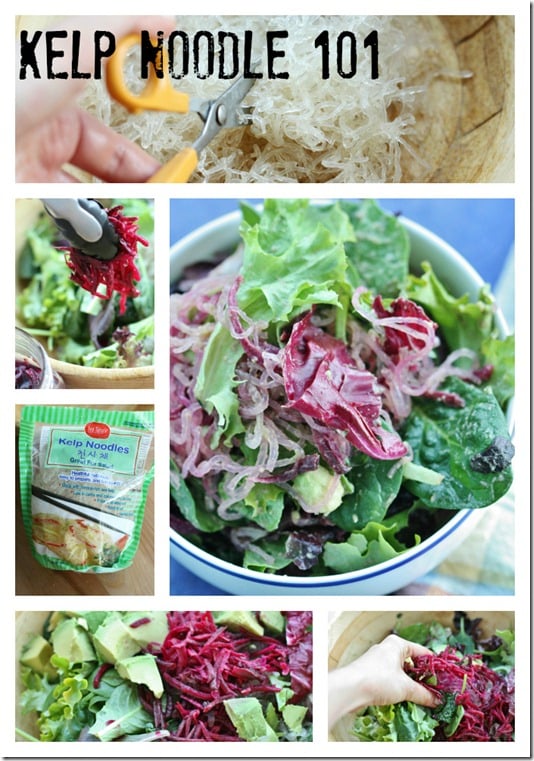
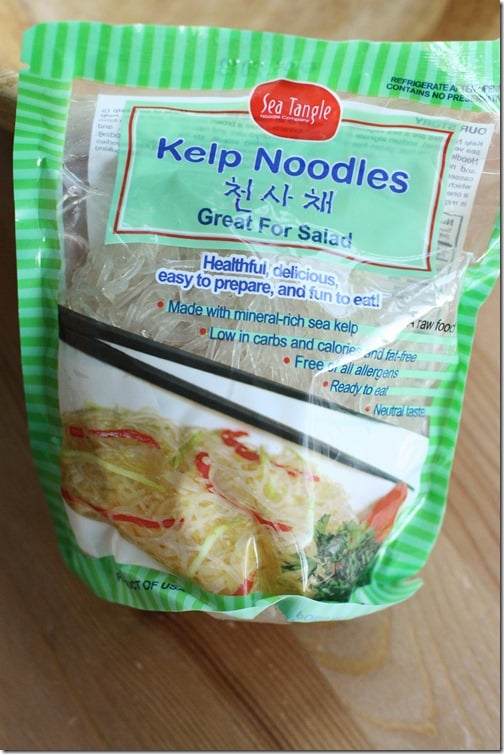
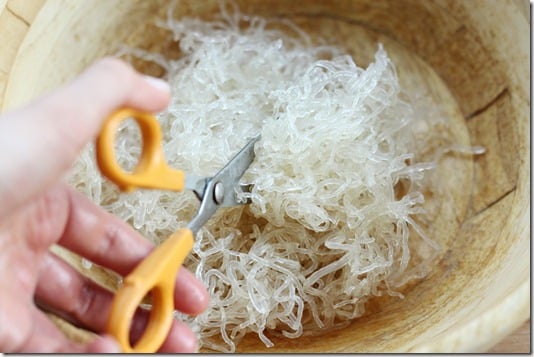

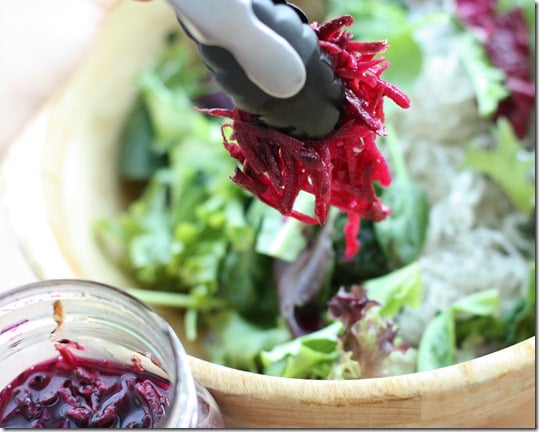


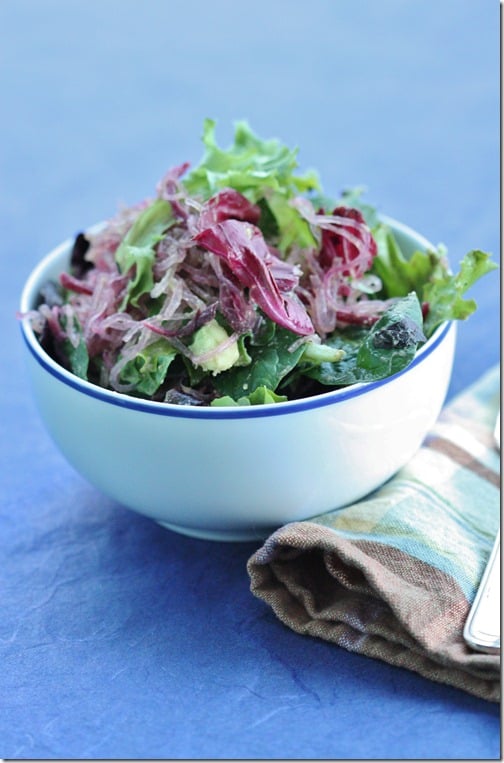
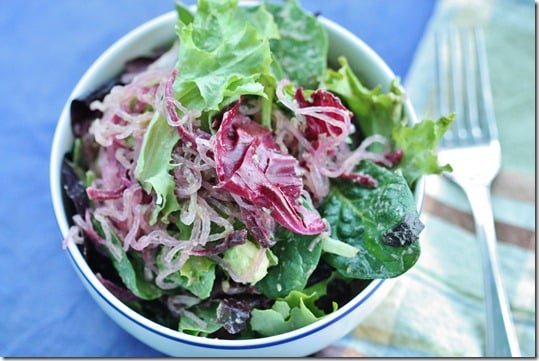


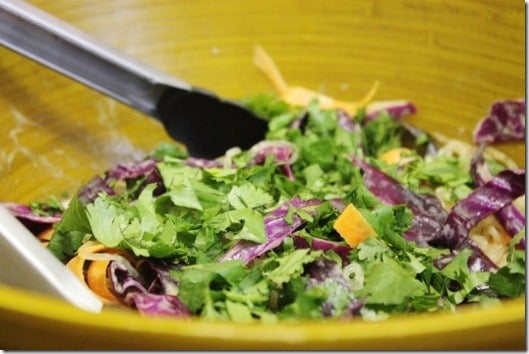


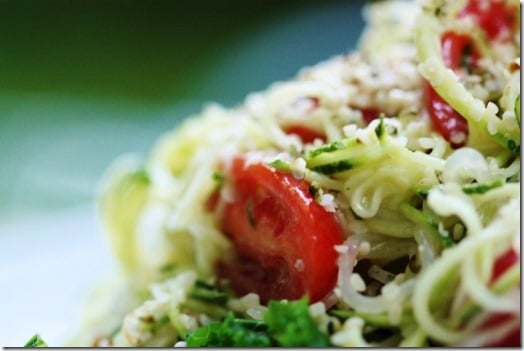


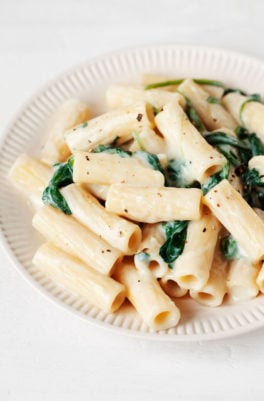
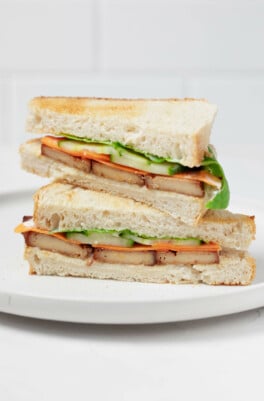

Leave a Comment
If you soak the kelp noodles for 10 min in 3 cups hot tap water, 1 Tablespoon baking soda and the juice of over lemon the soften and behave almost exactly like glass noodles. A much better noodle experience, in my opinion.
I just bought some Sea Tangle brand kemp noodles at thrivemarket.com for $3.45/bag with free shipping for orders over $49.
What are the benefits to hemp oil? I see you mention it would be good to add to the salad.
Have you ever made noodle soup with them?
No, but that’s a fun idea!
I saw these at Deal Mart at a steal of a deal – 2 bags for $1.00. I didn’t get them because I didn’t know what they were like. What is the texture like? They felt and looked kind of rubbery. Are you able to chew them ok or end up eating them whole? Thanks for the info. Now, I wish I had purchased and tried them.
This was so helpful! I recently bought a package at WF because they really intrigued me. But I got home and was like, “What in the world am I going to do with these?” So I googled and your site was the first that popped up. Thanks! :]
This is embarrassing. I made these a while back. They have been in my fridge since early April. It’s July now. Are they still good? They don’t look any different.
I usually just lurk on recipe websites, but this one was so good I just had to say something!! I made a few modifications — I used a cilantro lime dressing (modified from here: http://allrecipes.com/recipe/cilantro-lime-dressing/) and a baby spinach /arugula mix leftover from our CSA. I also forgot to soak them in warm water, but even so, this was hands down the tastiest vegetarian meal that I’ve ever made. Thanks for the great recipe!
If you suffer with diabetes, this can cause serious problems.
‘The what ‘ So what happens when one gets this problem. You may be interested to learn that amaranth grain has been utilized in Mexico as a method to combat malnutrition.
I have purchased Kelp Noodles at the Coop in Bellingham, WA for about $5/bag
I’ve found the noodles at sunset foods and whole foods. Also I think they’re great with alfredo sauce!
Helps regulate menstrual cycle; activates estrogen. Relieves PMS symptoms:
nausea, headache, weakness, fatigue, depression, cramps. MAGGI has
revolutionized the concept of Indian cooking.
Oh, how I love the internet. I saw someone talking about kelp noodles on Dr. Oz (where else?) and I was skeptical because I had tried Shitake noodles and found them disgusting. I am gluten free and LOVE pesto. I googles “how to prepare kelp noodles and found you! So I tried my basil/broccoli/walnut pesto on these and it was great. I actually like the noodles a little crunchy, but since I’m going to have to store the ret in water, I guess the second time, they will be softer.
Make sure the kelp isnt radioactive…
Hello — I guess I am not looking in the right place on your site — can you help me find the instructions for how to soften the noodles? The only way I’ve ever managed to soften them to put them directly in a tomato sauce, but I want to try a cashew cheese sauce, thus I’m unsure how to proceed. If you could provide like to the correct page I would be very grateful! Thanks 🙂
I just purchased a few packets of kelp noodles at my local Whole Foods, and they are really great tossed with a little bit of vinegar and then wrapped with lettuce! (I forgot the rinse them though, I’m still a newbie when it comes to kelp noodles!)
Sounds delish! I’ll make sure to try that for lunch!
Gena,
I’m a bit dubious about this product — how does a brownish red, STINKY seaweed turn into a neutral, translucent noodle product? Have you ever had any concerns about the processing this product undergoes? Have you been privy to the manufacturing of this product, perhaps through a tour or video? What’s your take on the striking transformation the seaweed undergoes?
My understanding is that the process is treatment with sodium alginate. I haven’t been concerned, to be frank, but it’s worth asking about down the line.
But do you know exactly what sodium alginate is? How IT is processed? Or how processed it is itself? And, though, I thought sodium alginate was more a medium to create food “pearls” than a food itself, it’s listed as one of the ingredients.
Now is one of those times I wish I was a braniac like you or, at the very least, could read and understand chemical formulas and such!
These sound so interesting and, admittedly, FUN, but I just can’t get on board with them until someone can tell me more. I understand why people wouldn’t want to eat fishy noodles, but I love seaweed. I wouldn’t mind a little sea water taste if it meant the product was a lot less processed. 🙂
You make a good point. I found this information simply googling “history of sodium alginate” http://www.cuisine-innovation.com/php_creations/cuisine-innovation/shop/includes/modules/pages/pdf/alginate_sodium_UK.pdf
It seems to be used not only in food but drugs and textiles. I just bought kelp noodles for the first time yesterday at the Wedge Coop in Minneapolis. I am excited to try them.
I think we have to remember that anything you buy from a grocery, even fresh produce from a farmers market, should be researched. How was it grown, where, how much shipping involved, what kind of labor, politics and environmental concerns (such as with tropical fruit like bananas) etc. Unless you grow your own vegan garden (I am on my second year of doing this but still rely on groceries for some things) from organic seed and vegan compost (I don’t use fertilizers at all and only use vegan food and plant scraps for compost and I have been successful)…your food is never going to be perfectly pure and unprocessed and grown completely ethically, save picking wild berries or mushrooms or another wild food unmessed with. Other animals also rely on those foods for their only intake so we have to be mindful of them too. In some cases we have to not be so strict in order to survive. I am not rich and live in a small northern community so buying things like kelp noodles is a luxury I am fortunate to have when I travel. I am also not 100% raw vegan though I was for a short time (I am still vegan going on three years) as I live in a cold climate and it was hard but I do the best I can under my circumstances. kelp noodles have such a small ingredient list that I wouldn’t worry about how they are processed compared with a lot of fancy packaged so called “raw” foods.
Noodles are always thought to be healthy especially when the contents are vegetables. The best thing about it is that it has looked good everytime with the preparation, presentationa and all.
I found that if you let the noodles soak overnight in warm water—then the next morning take a small handful –at a time–and massage them to break down the glassy or wiry quality—you can see the translucence diluted–and noodles feel differently and are not crunchy. Then when the sauce is poured on them–the taste–texture and appearance of kelp noodles–resembles ramen noodles without any cooking or heating!
Love the tutorial and the info! Going on the hunt for kelp noodles (in place of the brown rice pasta I’ve been using all winter!).
Can’t wait for that fermented beets post!
I’d love the recipe for the fermented Veggies!!
Gena I’ve missed you so much! Quite the vortex over here. It feels like a special touchstone to come over here, at last, and find you offering color, intelligent review, richness, and beauty as you were last time I visited.
Hoping all is well in post-bacc land, and delighted you’re fermenting your own veggies!
love
Ela
Perfect timing. I have been wanting to buy kelp noodles, so I did today, and had no idea how to prepare them and what combine them with. Thanks so much. I bough the exact ones in the post! ~Stephanie 🙂
Tried the recipe and it was great! I had never eaten kelp noodles at room temp before, usually I heat them and use as a substitute for spaghetti or in other warm dishes. This was a tasty treat, thanks Gena!
What a great tutorial. I tend to rely on my standard kelp noodle “recipe” so I look forward to changing it up with your suggestions.
Also wanted to add that you can find them at most Whole Foods Markets (even NYC).
I am copy and pasting this from a review on amazon.It mentions a video that talks about the kelp noodles’ processing, as well as one of the ingredients: sodium alginate. I think it might be useful/helpful for some:
22 of 25 people found the following review helpful
Health warning to all, September 30, 2012
By Bright blue
This review is from: Gold Mine Kelp Noodles, 16-Ounce (Pack of 6) (Grocery)
I loved these noodles. Found they absorb flavors very well and soften when boiled. However, something did not seem right about the nutritional content. I found a video on YouTube (titled Are Kelp Noodles by Sea Tangle a raw food?) and discussion forums that discuss these noodles. It turns out that these noodles are mainly made of sodium alginate, a highly processed derivative of kelp. The kelp undergoes a lot of chemical treatment including some at high temperatures to made this powder, which of course resembles the noodles a lot more than does kelp itself. In all likelihood very little of the nutritional value of kelp makes it into these noodles. It is used in the food industry as a gum, but please consider that you are eating a large amount of it in the noodles. It is not good for people with hypertension and people have ended up with upset tummies. Besides we don’t really know what the long term consequences of eating this stuff are. It is not a vegetable but like some sort of plastic. It is unfortunate that they can even sell this product. I was not looking for raw food (which it is not), only something low calorie. I ended up throwing out five bags of this.
good to know, thanks for info. Defiantly not part of clean eating if highly processed, Any suggetion for pasta that would fit into clean eating palo diet?
LOVE kelp noodles… I have some waiting for me in the fridge to make this tasty salad! I never thought to soak them in warm water to soften them before using, great tip 🙂
Looking forward to the tutorial, I need more fermented veggies in my life!
i bought some, but am nervous to try them.
I want to make spaghetti with them. Do i need to cook them?
Will it harm them if i heat them up?
Thanks
I bought some and it smells like plastic. And I thow them away. I just can not believe why they are talking about how delicious the plastic is? It smells like plastic and taste like plastic too. I am sorry for the truth I said here.
That was my impression too, when I first tried them: plastic! Spaghetti substitute this was not! Now however, I rinse them, sprinkle with salt and some lemon juice and cover with water for 10-30 minutes. Still don’t care for them in Italian cuisine, but for Asian food, they are awesome. Seriously, I could eat them every day, and sometimes, do!
Thanks for explaining kelp noodles I can’t wait to try them!
Only thing is- I wouldn’t order from iHerb. I did and they sent me the wrong Sea Tangle prduct -they were extremely arrogant when I contacted them. Their customer service totally stinks. Stick with Vitacost!
Thanks for the great recipes Gena! I love using grain-free alternatives, especially Quinoa, but have never thought to try Kelp noodles so this was a refreshing post with some creative ideas. The Raw Goddess Bowl is calling to me 😉
Inspired by your recent recipe, I bought a package of these at Lassen’s Market here in Los Angeles (Los Feliz area) and made a delicious soup with them. It was so easy and after being in the hot water simmering they really did soften up. Now that I’m not intimidated anymore I’ll be trying a salads and other dishes.
This is a great post! I’ll be honest – I’ve never had kelp noodles. I was always afraid they’d taste fishy. Now I’m excited to try them.
And way to tease about the carrot/beet/cabbage! Can’t wait for that tutorial 🙂
Hi Gena! I have heard that kelp noodles are really high in protein and have wanted to try them for a while. Do they have a algae or seaweed taste? Are they similar to nori? I didn’t really like the texture of nori when I tried it. Thanks!
They don’t have a taste, but I recommend (like Gena) to soak them in warm water first.
I love kelp noodles! I like to put them in some kind of sauce in the crockpot for several hours (obviously this is totally not raw!)… it softens the noodles and tastes really great too. They’re almost like regular noodles when they cook this way.
I was hoping I could cook the, Thanks so much for the information.
I’ve been eating glass noodles since I was little but this looks SO INCREDIBLY GOOD.
FAB post, Gena! Our girls love kelp noodles, but they aren’t widely available so I think I’ll jump on that offer link you’ve posted. You give so much to your readers, it’s a beautiful thing. 🙂
You read my mind! I was just going to look on your sight for Kelp Noodle recipes and BAM! the post was all about kelp noodles. Now I have no excuse! Break open the bag!
Yum! I love kelp noodles, too. Made another version of my Chinese Five Spice Stir fry with kelp noodles. I have yet to try them with leafy greens in a salad. Next time! 🙂
Thank you! This is a great tutorial and recipe round-up; I love the pictures, too. You sure do know how to take seemingly daunting raw foods and turn them into something easy and delicious!
I’ve been kind of wondering about kelp noodles since I saw them recently on your blog. They are definitely an unconventional noodle choice, but as long as they don’t have a seaweed type of taste to them, I might be open to giving them a try.
Just ordered me some of these little noodles today from Vitacost! Can’t wait to get them and play around with some of your suggestions!!
Kelp noodles are SO delicious. Well, in all honesty, I don’t think they have much of any kind of flavor, particularly this brand, and tend to take on the flavor of whatever you put them on or in. I used mine in combination with mung bean sprouts, carrots, shitake mushrooms, green onion, marinated tofu, sesame tahini, and other Asian inspired flavors last week. SO DELICIOUS!! They also taste great with creamy avocado sauce. Yum yum!
This sounds awesome. Can you post this recipe? thanks!
Hi Gena! One more question for you: I purchased kelp noodles an embarrassingly long time ago, and I’m wondering how long they last if stored unopened in the fridge. Is there a way to tell if they’ve gone bad? Thanks!
Not Gena, but I’ve done this myself and can attest that especially unopened, they can sit for months with no appreciable deterioration.
So long as you keep them submerged in water (eg in a mason jar) after opening, they’ll keep like that for a long time too.
Thanks for the kelp noodle info. I’ve seen them at Whole Foods and Natural Grocers but have yet to buy them. I’ll have to change this soon!
I bought some today at a Korean Market called Greenland. I’m sure they have them at most Asian markets. It was only $2.99 per bag. Great deal!